ecosystem-guides.com
....exploring the planet's ecosystems
AUSTRALASIAN
Mangrove
An ecosystem that switches from land to marine every single day...
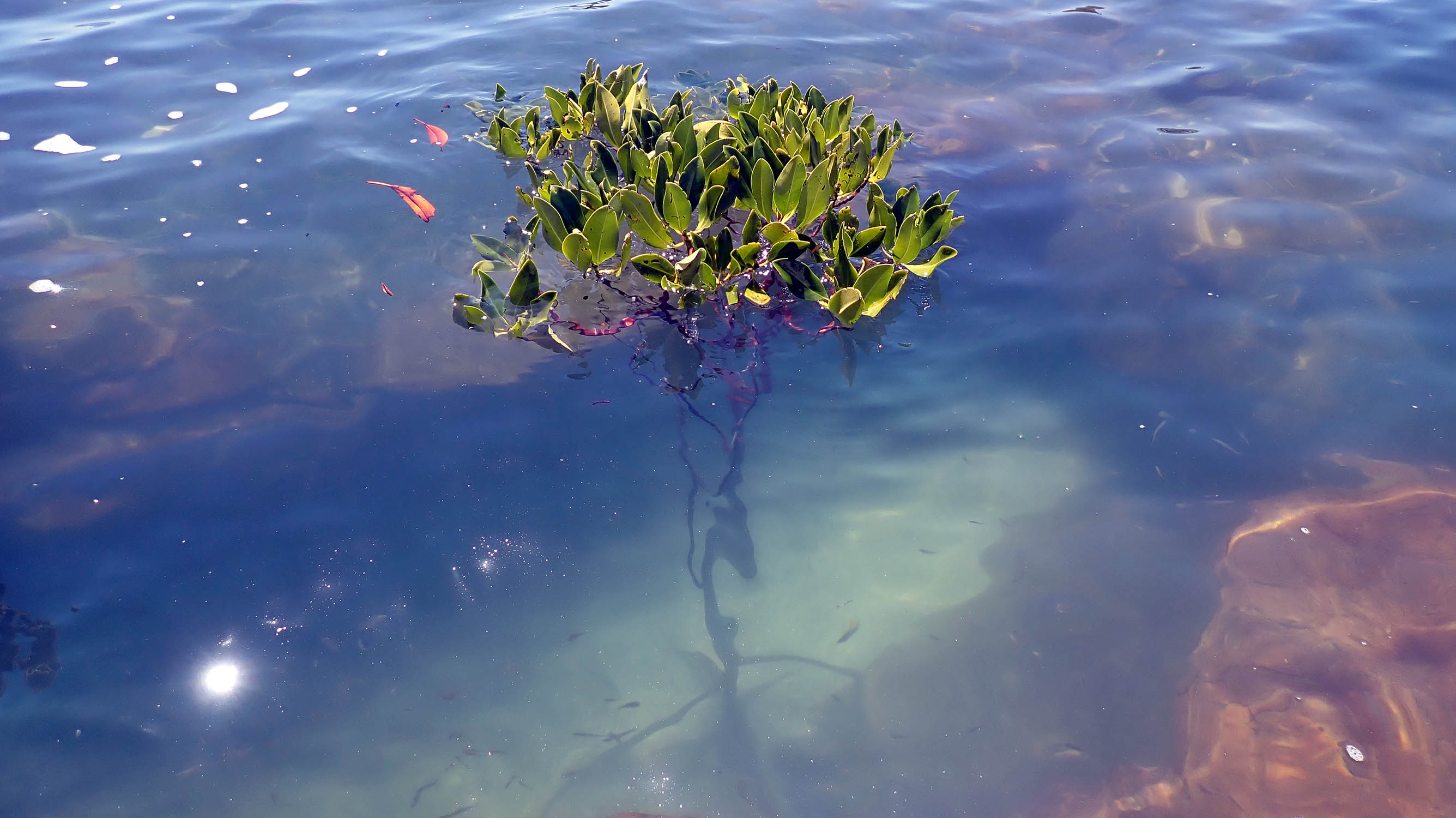 (Vansittart Bay)
(Vansittart Bay)The term ‘Mangrove’ refers to both a type of plant and an ecosystem. They tend to develop best in muddy estuaries, but they can also grow right on tropical beaches. When they grow in stands they make up a distinctive, easily recognised ecosystem. Unusually among flowering trees and plants, mangroves are defined by their ability to grow in the tidal zone on the edge of the sea. The mangrove community is often also characterized by patterns of zonation, with certain species living on the landward edge, while others tend to live on the seaward side.
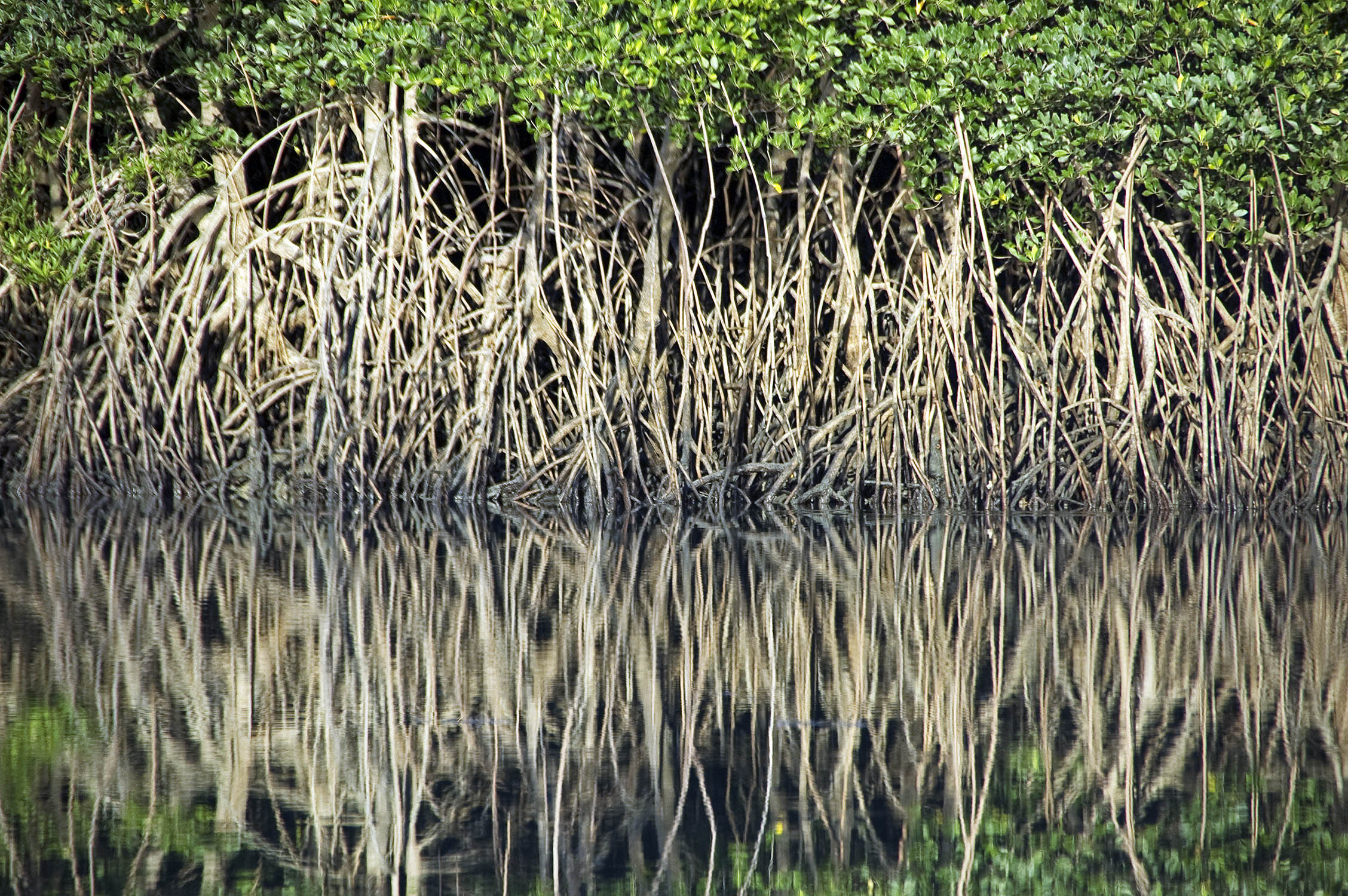
While different mangrove genera have evolved once or twice out of many different families, the family Rhizophoraceae is actually dominated by them. Most of the members of the family tend to have round, smooth, shiny, leathery leaves with a short point, and are bunched together at the end of the branches. There is often a long terminal stipule. Most species of Rhizophora, Ceriops, and Bruguiera produce the distinctive long cigar-like seedlings propagules.
Rhizophora are well known and recognizable mangroves. This is largely due to their often elaborate prop root systems. In other respects it is typical of the rest of the family in having shiny, roundish leaves bunched at the end of the stems, small flowers, and long seedlings that often begin to grow on the parent tree.

Below is Rhizophora stylosa, ‘Red Mangrove’. It usually grows as a small tree. It's common name comes from the reddish colour of the trunk and roots, especially when wet. The distinctive roots are long and spider like, and there are often long stiff aerial roots growing down from the branches to the ground.
 (Cowrie Beach, Bloomfield, Australia)
(Cowrie Beach, Bloomfield, Australia)Below is the incredible seed of the Rhizophora mucronata, 'Loop root', 'Red Mangrove'. This is the longest mangrove seed.
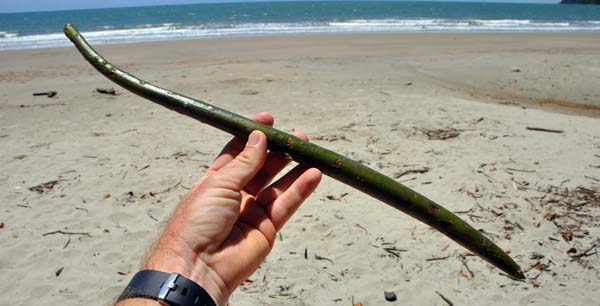 (Etty Bay Queensland, Australia)
(Etty Bay Queensland, Australia)The family Lythraceae contains over 30 genera and 600 species. The species are mainly herbs and shrubs. They are found all over the world. The petals are often held ‘scrunched’ up in the bud, and thus when they release they appear ‘crumpled’.
Pemphis acidula. Stunted growth, flaky bark and small leaves. Looks rather like a tea tree – even the flowers are leptospermum-like. However, small leaves are not at all fragrant when crushed. Tree is usually fairly short, often bush like. Bark is fissured and often flaky or stringy. Leaves are small and rounded with a small rounded tip, almost succulent in character, and sometimes slightly hairy, very short petiole and are thus held close to the branch. Flowers are small and white, with the quite separate petals having pointed tips, and there are small yellow stamens in the middle. Fruit is small and woody. Often referred to as a ‘mangrove’, but probably more often noticed when growing along sandy and rocky beaches (sometimes well into the sea water) rather than in mangrove communities. Found throughout much of the tropical Indo-Pacific, from eastern Africa to Polynesia.
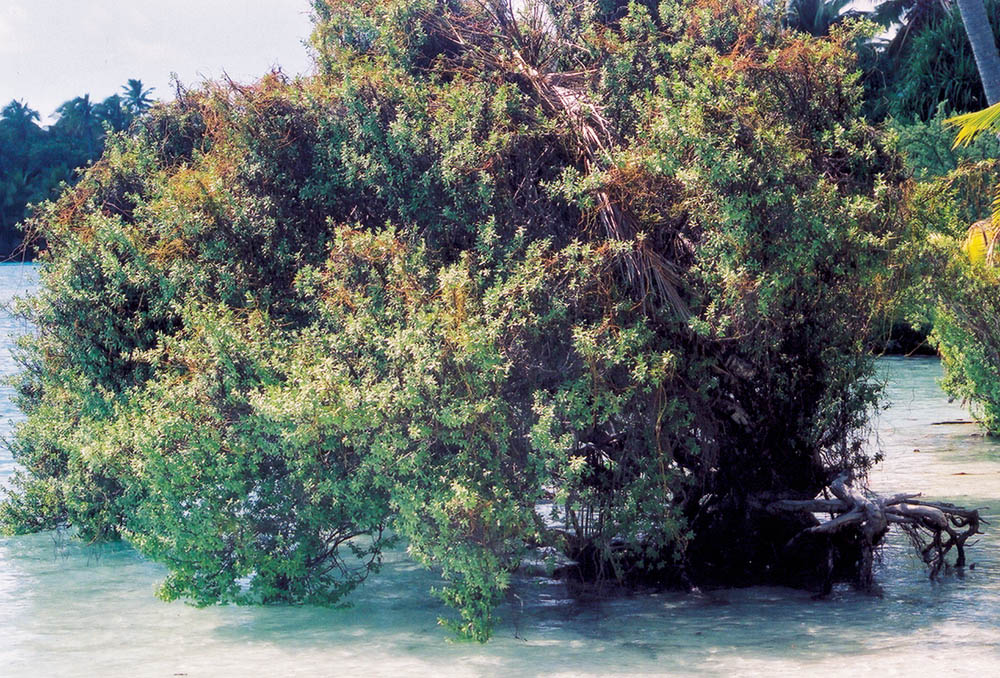
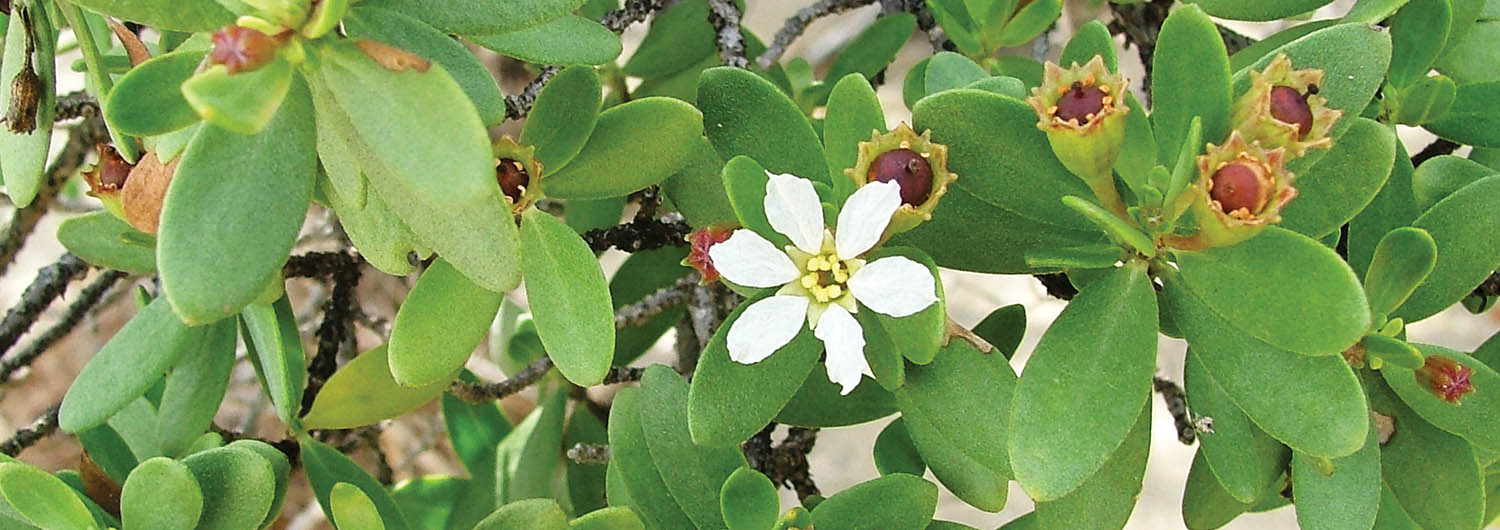 (Cape York coast, Australia)
(Cape York coast, Australia)One of the largest and most obvious flowers belongs to the 'White Apple Mangrove', Sonneratia alba. These fluffy flowers attract birds (such as honeyeaters) and insects by day and bats and moths by night. The rounded 'apple' green fruit is dispersed by the sea, and reported to be edible in tropical Asia.
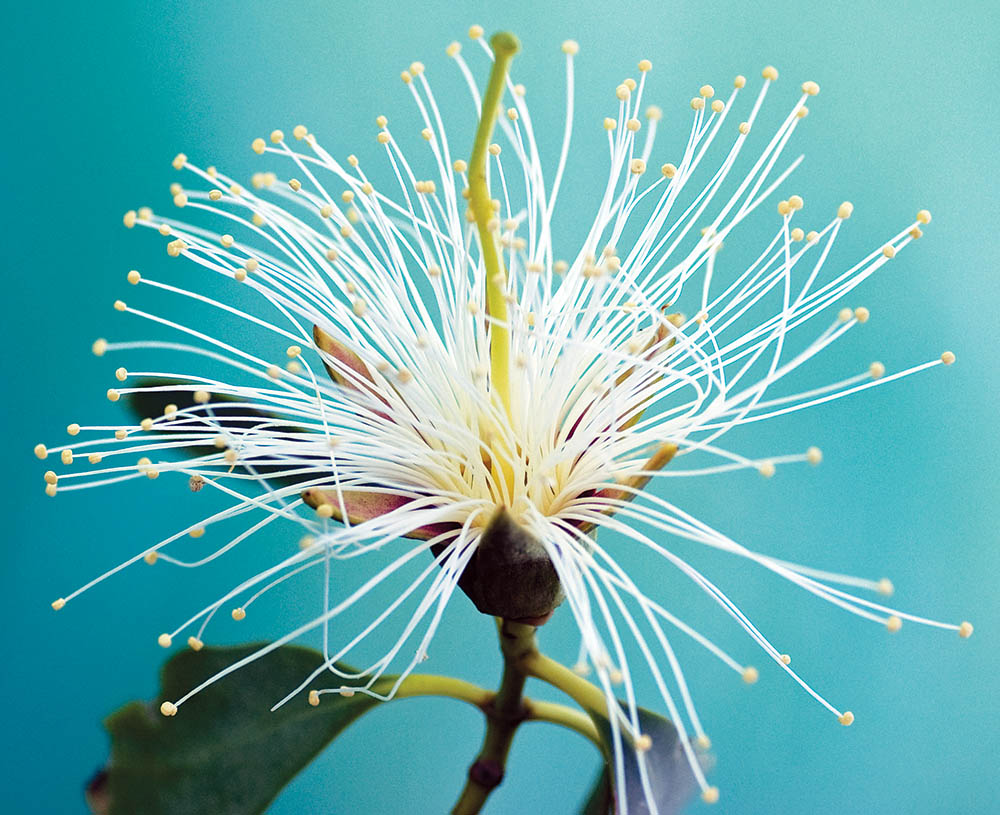 Apple Mangrove flower, Horizontal Waterfalls, Australia
Apple Mangrove flower, Horizontal Waterfalls, Australia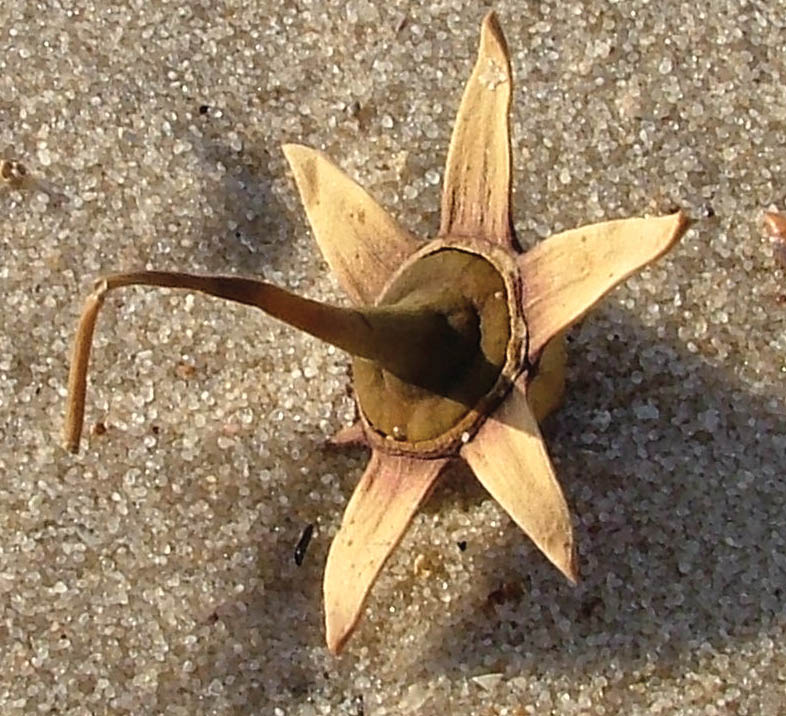
While the large family Myrtaceae is arguably the most important in the Australasian region, there are few species in the mangroves derived from this family. The genus Osbornia only contains one species. Osbornia octodonta, the ‘Myrtle Mangrove'. This usually grows as a shrub to small tree. It has small rounded, light green leaves, in opposite pairs, with distinctive red stems, unlike any other mangrove. An even more distinctive feature is that when the leaves are broken up, they have a ‘tea-tree’ small. The small white flowers are followed by small, cup-shaped fruits. Even though this is called a 'mangrove', it just as often found on beaches outside, or on the edge of, the mangrove communities. It is usually found in small numbers, mixed in with other mangroves, often on sandy beaches or spits. It's distribution is northern Australia and through south-east Asia.
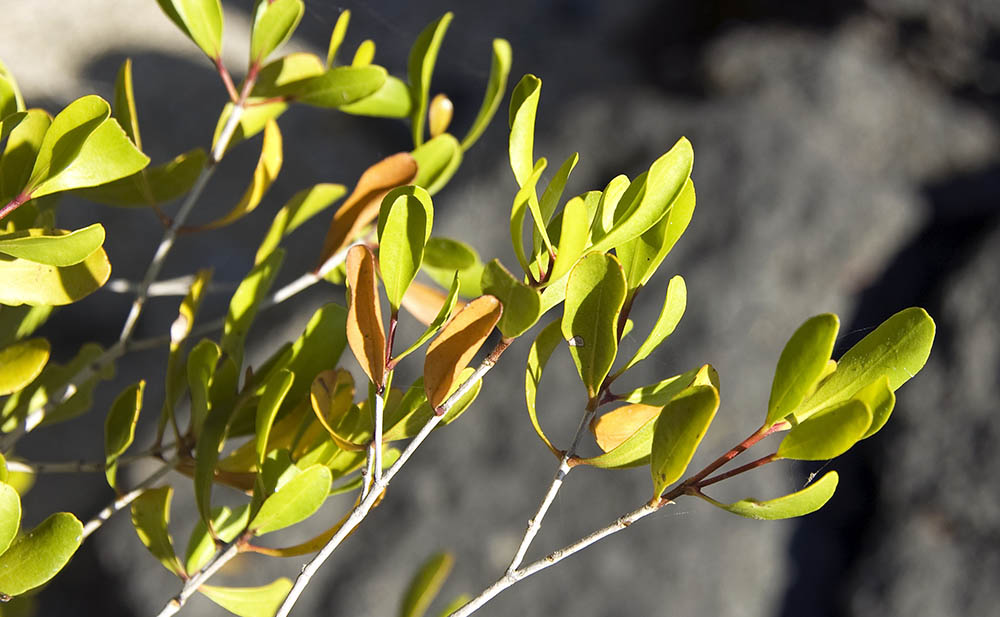 (Kimberley)
(Kimberley)The genus Heritiera has about 7 species found throughout the old world tropics of Africa, Asia and the Pacific. Heritiera littoralis, the ‘Looking Glass Mangrove’ is a mangrove tree with a distinctive white-grey pale trunk. Usually develops winding, ribbon-like buttress roots. Dark green leaves are a distinctive pale silver colour underneath, thus supposedly resembling a ‘looking glass’ mirror. The fruit is a distinctive large oblong woody pod with a ‘keel’; however, as the fruit floats with the keel up, this acts as a sail.
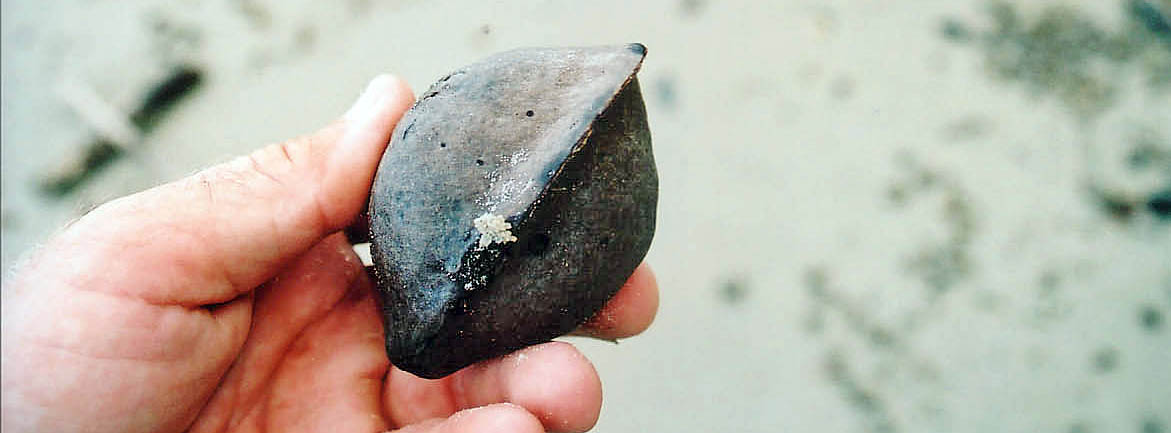
The family Meliaceae has some 600 species found throughout the tropics of the world, with only a few in temperate areas. Some species grow simple leaves, but many have compound leaves, commonly divided pinnately or binnately, with the leaflets being opposite and having terminal leaflets. The fruits often split open to reveal seeds with a colourful aril. The family includes some important timber trees, including various Mahogany and Cedar. In the mangroves the main genus is Xylocarpus, the 'Cannonball Mangroves' or the ‘Cedar Mangroves’. The leaves are compound with small opposite leaflets, with obvious yellow venation and dark thickening at the stem. The flowers are small and white or pinkish. These are followed by huge, round ‘cannonball’ fruits. They begin as large round green woody balls. They then turn brown and may break up (dehisce) into parts while still on the tree, or fall and explode into many pieces if they hit a hard surface below. These angular wedges are frequently found washed up on beaches along the tropical Australian coast. They are often called ‘monkey puzzle’ nuts; the angular pieces never quite fit back into the original shape again.
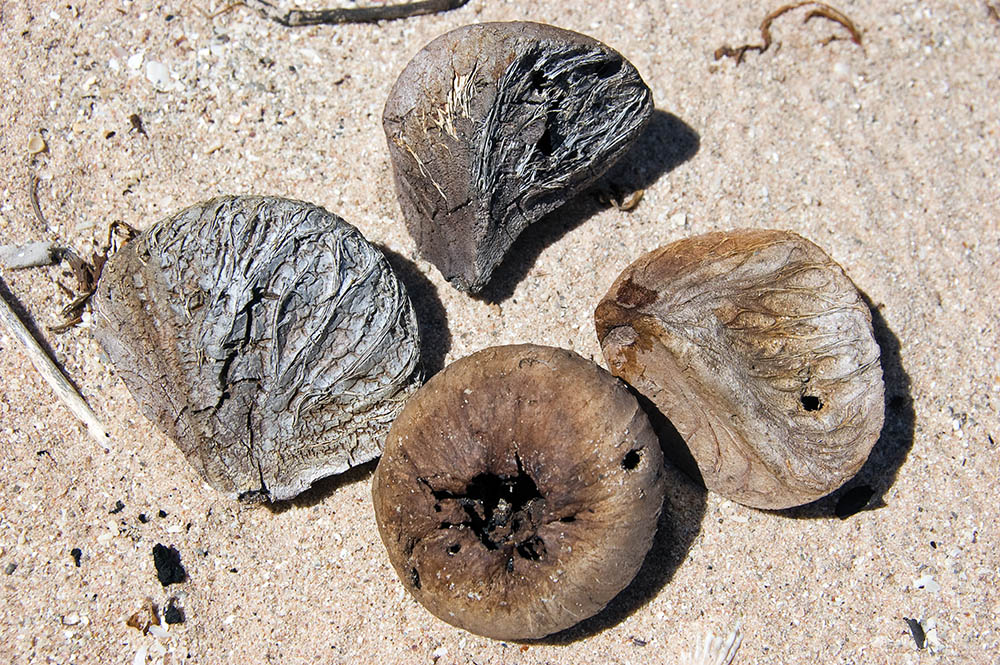 (Kimberley, Australia)
(Kimberley, Australia)The genus Xylocarpus includes the ''Deciduous Mangroves'. This common name refers to the habit of the leaves going distinct red-orange before falling off. The reddish colour is in strong contrast to the other consistent greens of other surrounding mangrove species, all of which are not seasonally deciduous.
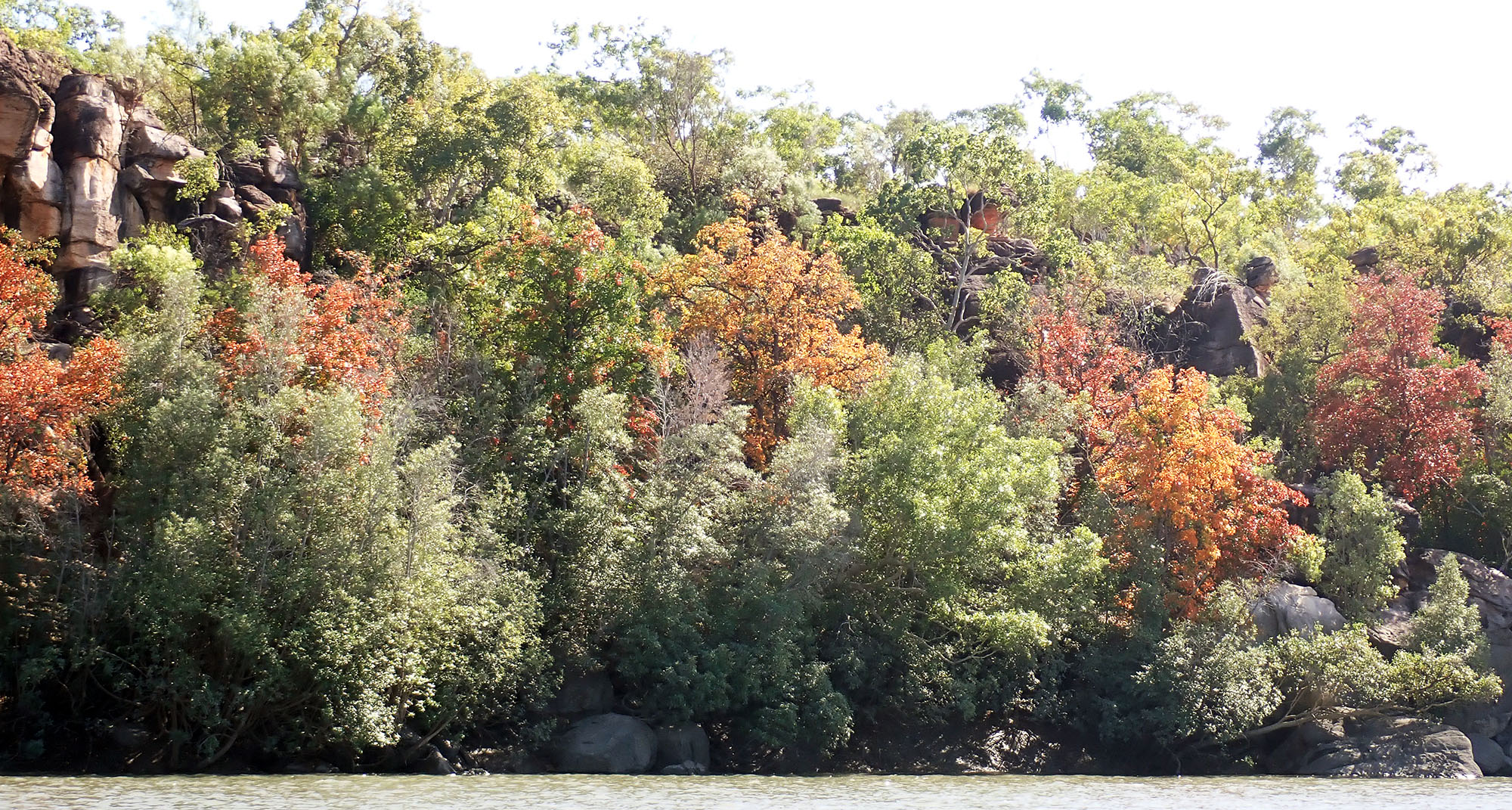 The 'Deciduous Mangrove', along the Prince Regent River, western Australia.
The 'Deciduous Mangrove', along the Prince Regent River, western Australia.The family Myrsinaceae has about 1000 species found throughout the warmer parts of the world. The flowers are often arranged in umbels. The stamens are located opposite the petals. The following fruits are usually fleshy with one seed. In the Australian mangrovs the family is represented by: Aegiceras corniculatum, the ‘River Mangrove’. This usually grows as a small tree or more commonly a shrub. The flowers begin with pointed buds, then open up to reveal small white flowers with strange smell. These develop into curved horn-like fruit. They are often found on beach sand, such as on spits, on the edge of mangroves. Found across northern Australia, and throughout tropical Asia.
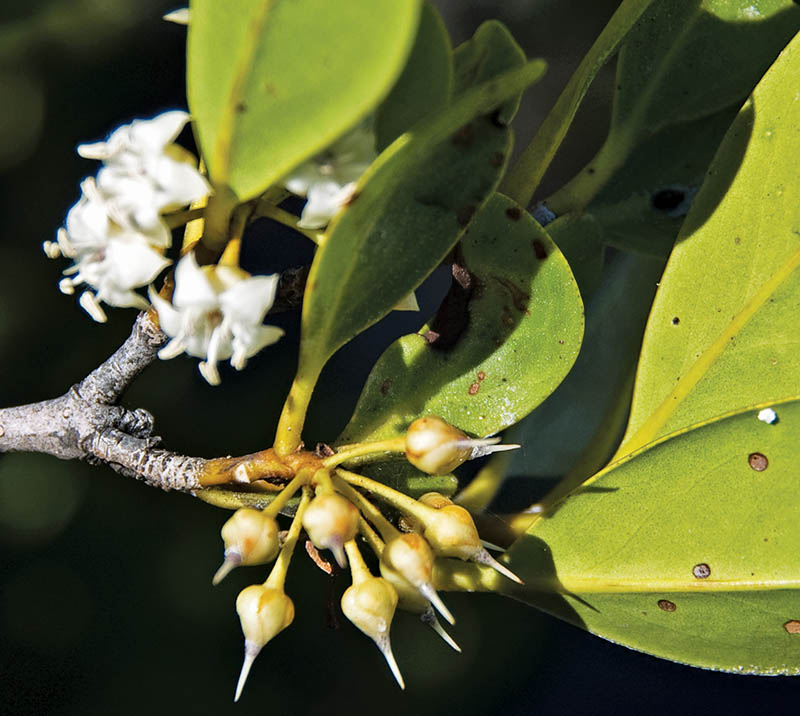 (Kimberley, Australia)
(Kimberley, Australia)The most widespread mangrove in Australasia, and the most widespread internationally longitudinally, is the Avicennia marina, 'Grey Mangrove'. It is found along coasts in the Indo-Pacific; found as far south as New Zealand. The tree has roots spread out laterally and grow stick-like projections through the mud. Named because of its generally grey bark, although this can vary from white to almost greenish, usually smooth with some papery peeling. One of tree’s most distinctive features is its roots: small, thin and peg-shaped ‘snorkel roots’ called pneumatophores that stick up out of the surrounding soil. Leaves are rather long and thin and coloured a light green with a pale underside. Underside has many tiny glands that exude salt, thus they are salty to the taste. Flowers are smallish and orange and are followed by greenish-yellow, slightly furry fruits.
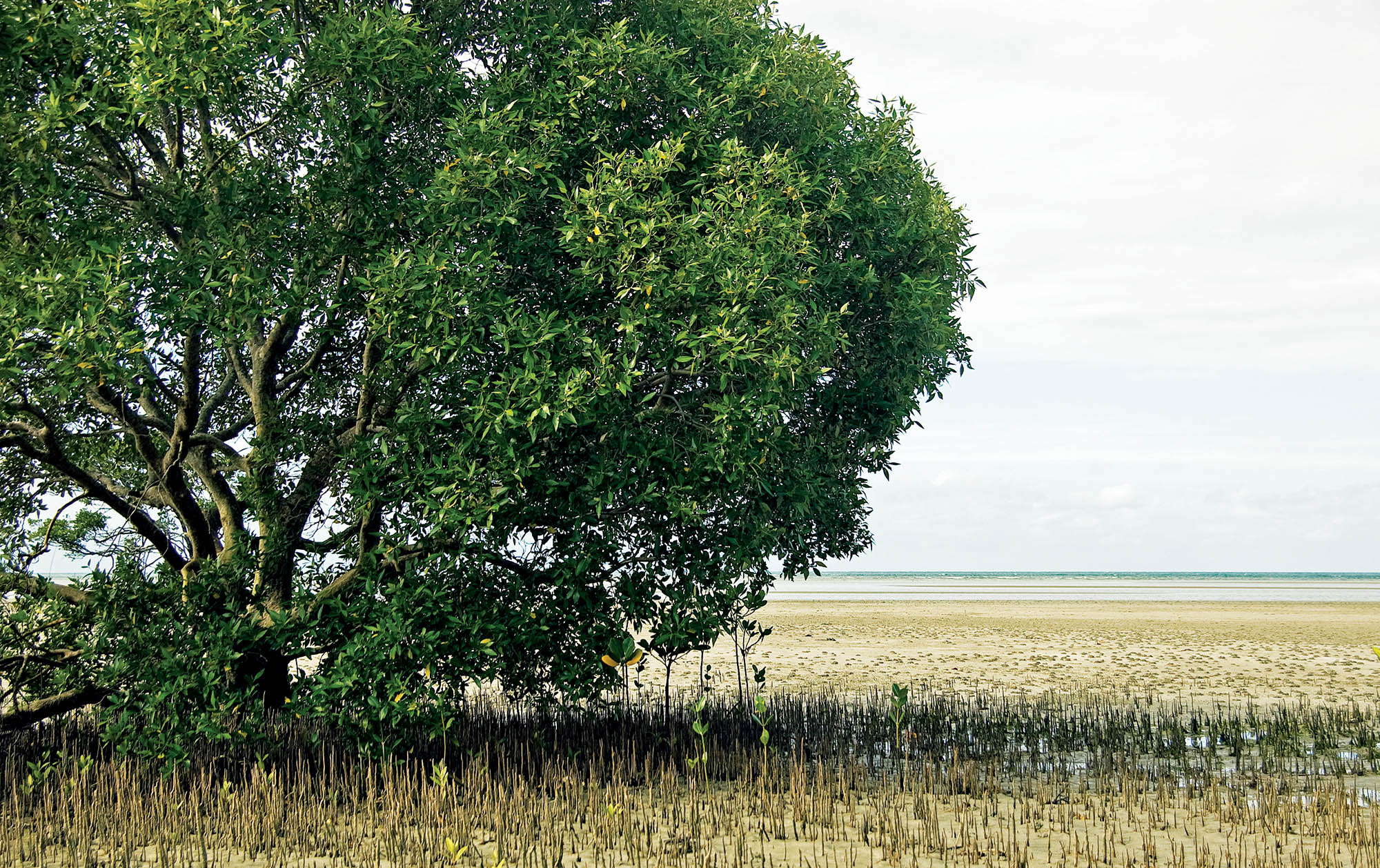 the widespread Grey Mangrove, (Bloomfield coast)
the widespread Grey Mangrove, (Bloomfield coast)Some species of jellyfish swim up river to breed. In areas with large tidal ranges, the outgoing tide may resulting in jellyfish hanging from mangrove tree branches like plastic bags.
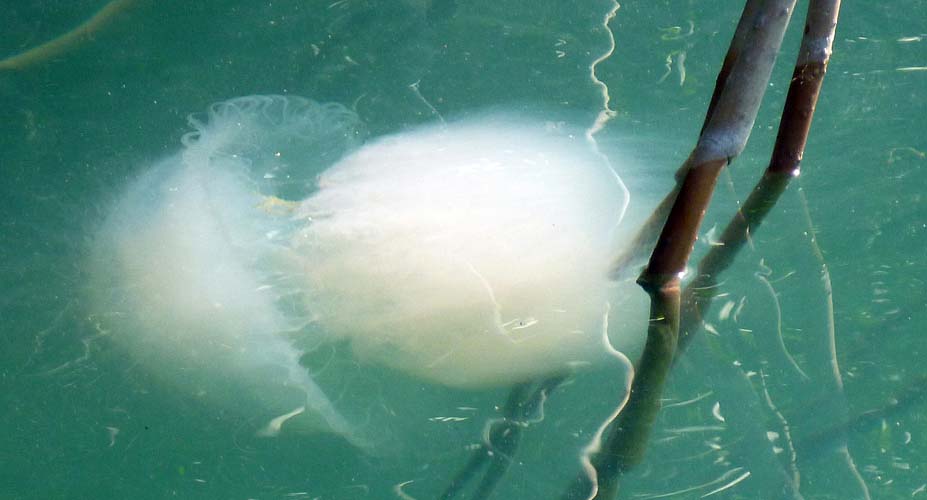 Sea-Jelly (Prince Frederick Harbour, Western Australia)
Sea-Jelly (Prince Frederick Harbour, Western Australia)There are not that many species of insects in the mangroves compared to the adjacent forests and savannas, but it sometimes feel like it if you are getting attacked by annoying midges or mosquitoes.
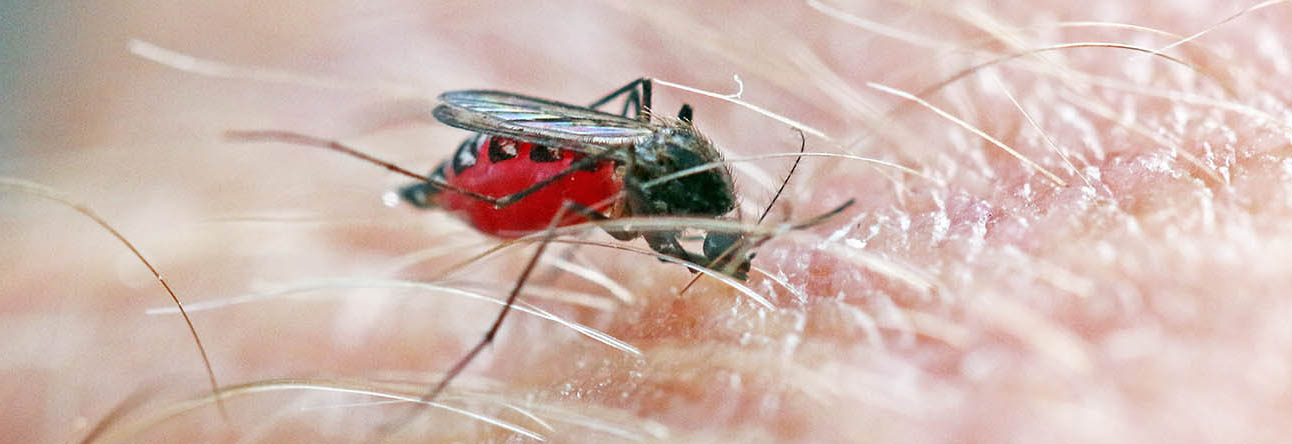 The author getting bitten by a mosquito that is filling up my blood (image by Damon Ramsey)
The author getting bitten by a mosquito that is filling up my blood (image by Damon Ramsey)However, crustaceans are a very diverse and important group in the mangroves. In many ways, crabs and their relatives are the ecological equivalent of insects and other invertebrates in the forests, and they fill in a range of niches and come in as range of forms. There are species that live on tree trunks, others on muddy banks, and some swimming in open water. They can be predators, scavengers and grazers.
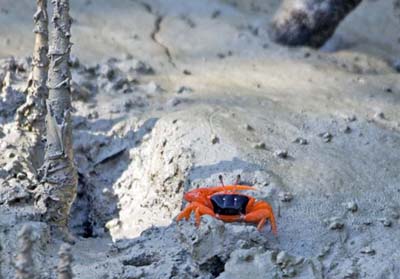 Flame Fiddler Crab (Prince Frederick harbour)
Flame Fiddler Crab (Prince Frederick harbour)There are over 40 species of mudskippers. They are found along the coasts of the tropical Indo-Pacific, from eastern Africa, through Asia and into the Pacific. They are not found in the Atlantic, except for one species that occurs on the western coast of Africa. They are absent from the Caribbean. Mudskippers are truly amphibious, living partly in and partly out of the water. Different genera have varying levels of adaptation to living either in or out of the water. They are referred to as ‘mudskippers’, as they do indeed skip across the mud, with a flick of their tail. They also drag themselves along with their well developed and strong pectoral fins. Mudskippers have bimodal respiration, which means they can breathe both in the water (with gills) and in air. When on shore, like the unrelated frogs, they can perform cutaneous respiration, breathing through the skin, and through the lining in their mouth and throat. This requires that they stay moist, so mudskippers are never too far from water, and which is why they may be seen to occasionally roll in puddles. They also inflate the opercular chambers with air and so look like they have huge ‘chipmunk-like cheeks’. Another remarkable feature associated with their amphibious lifestyle are their bulbous eyes. These are huge for the size of the fish, and sit atop their head, giving them the potential for almost 360 degrees view. This helps them keep watch for movement of potential predators, such as kingfishers and egrets. The eyes can be completely sucked back into the eye socket to keep them moist
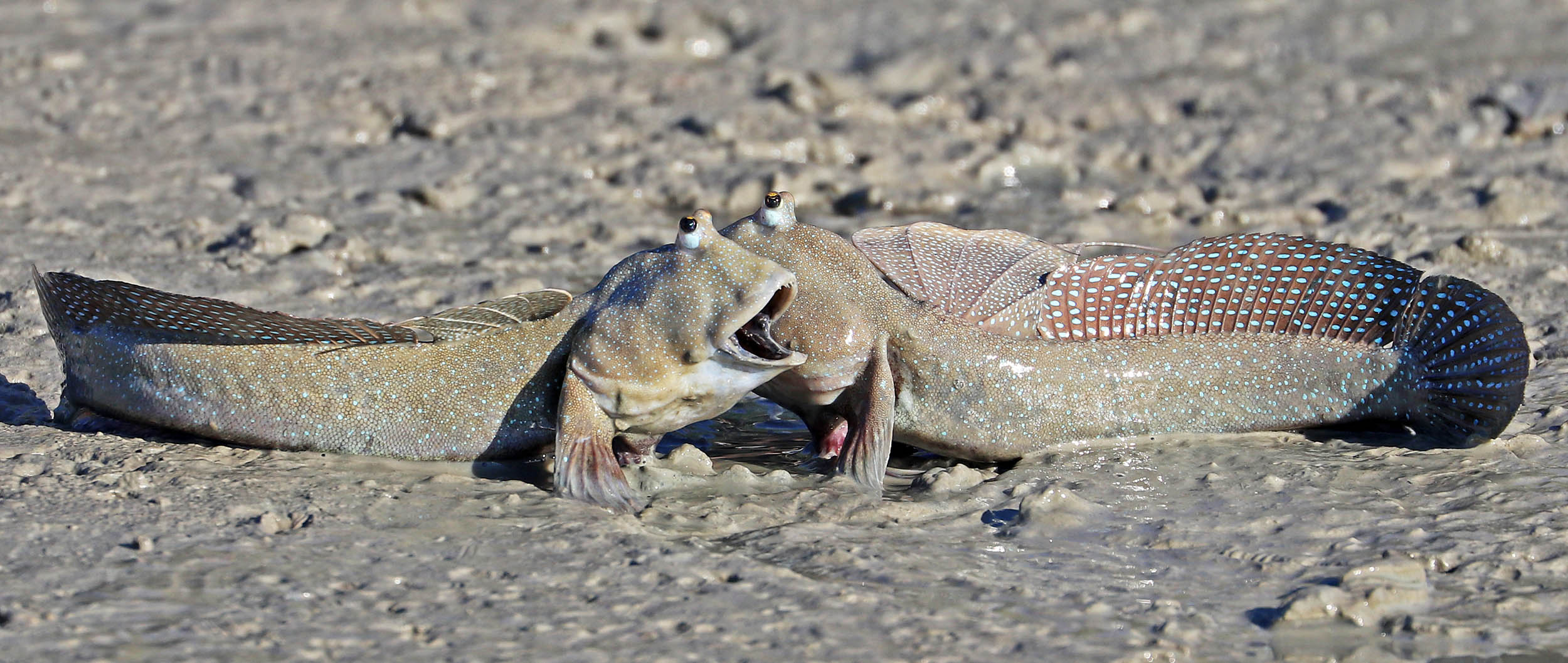
Crocodylus porosus, 'Indo-Pacific/Salt-water Crocodile' is the biggest crocodilian in the world, also largest of all living reptiles. Also known as ‘Estuarine Crocodile’ or ‘Indo-Pacific Crocodile’, the first name reflecting its preferred habitat of estuaries, and the latter name reflecting its large geographical range throughout tropical Asia and the Pacific. They are the top predator of the Australasian mangroves. Crocodiles use different senses to interact with their environment and detect prey. As they hunt mostly at night, their eyes are sensitive to light. As with many nocturnal animals, after light passes through the front of the eye, it is reflected back by a layer of guanine crystals in the tapetum at the rear of the eye, to allow light another pass. This also causes the orange-red ‘eyeshine’ of crocodiles when spotlighted at night.
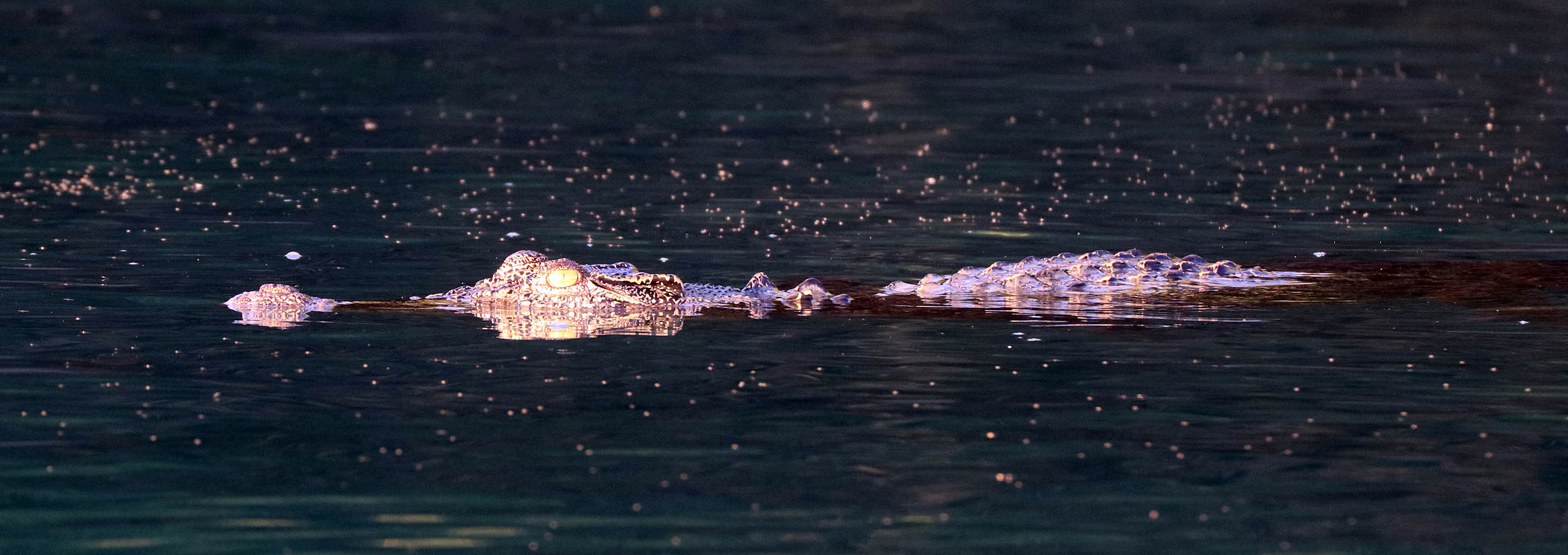 Indo-Pacific Crocodile (Red Cone Creek, WA)
Indo-Pacific Crocodile (Red Cone Creek, WA)The family Scolopacidae includes the 'Sandpipers', many of which are in their drab non-breeding colours when in the mangroves. Many species feed on the edge of the mudflats outside of the mangroves, but the 'Common Sandpiper' Actitus hypoleucos is frequently seen inside this ecosystem. They are small and display a distinctive bobbing up and down movement.
 Common Sandpiper, (Hunter River, WA).
Common Sandpiper, (Hunter River, WA).The group of birds most commonly noticed by visitors to the Australasian mangroves are no doubt the Herons of the family Ardeidae. The Herons range in size and colour. There is the skulking grey-coloured 'Mangrove Heron', the huge 'Great-billed Heron' and the 'Little Egret', the latter of which is one of a number of species that are white and called 'Egrets'. This name comes from France where it was popular for the women to wear the feathers of white herons in their hats; the southern French term for herons Aigron and then the diminutive Aigrette, gaves us the name 'Egret'. Ladies: just take the legs off the bird before you put it on your head in a hat, or you might get a toe in your eye.
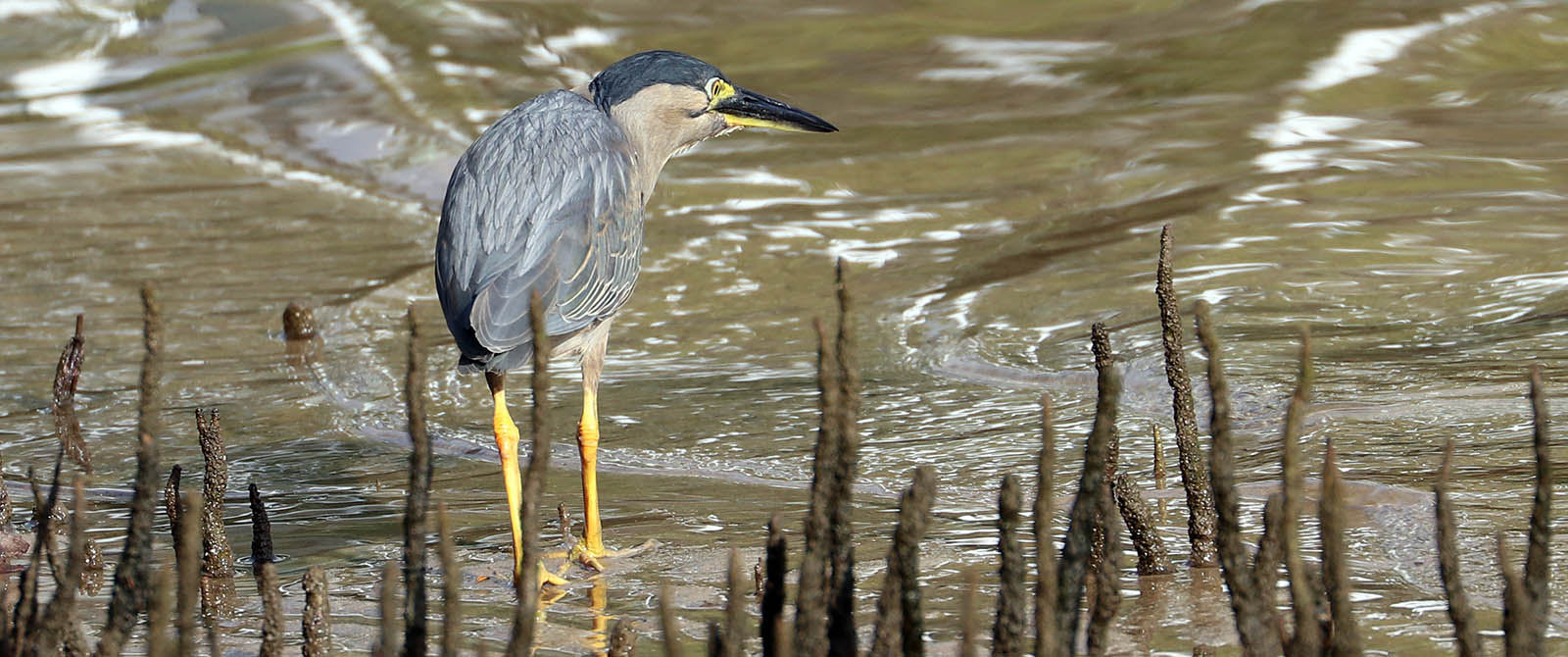 Mangrove Heron
Mangrove Heron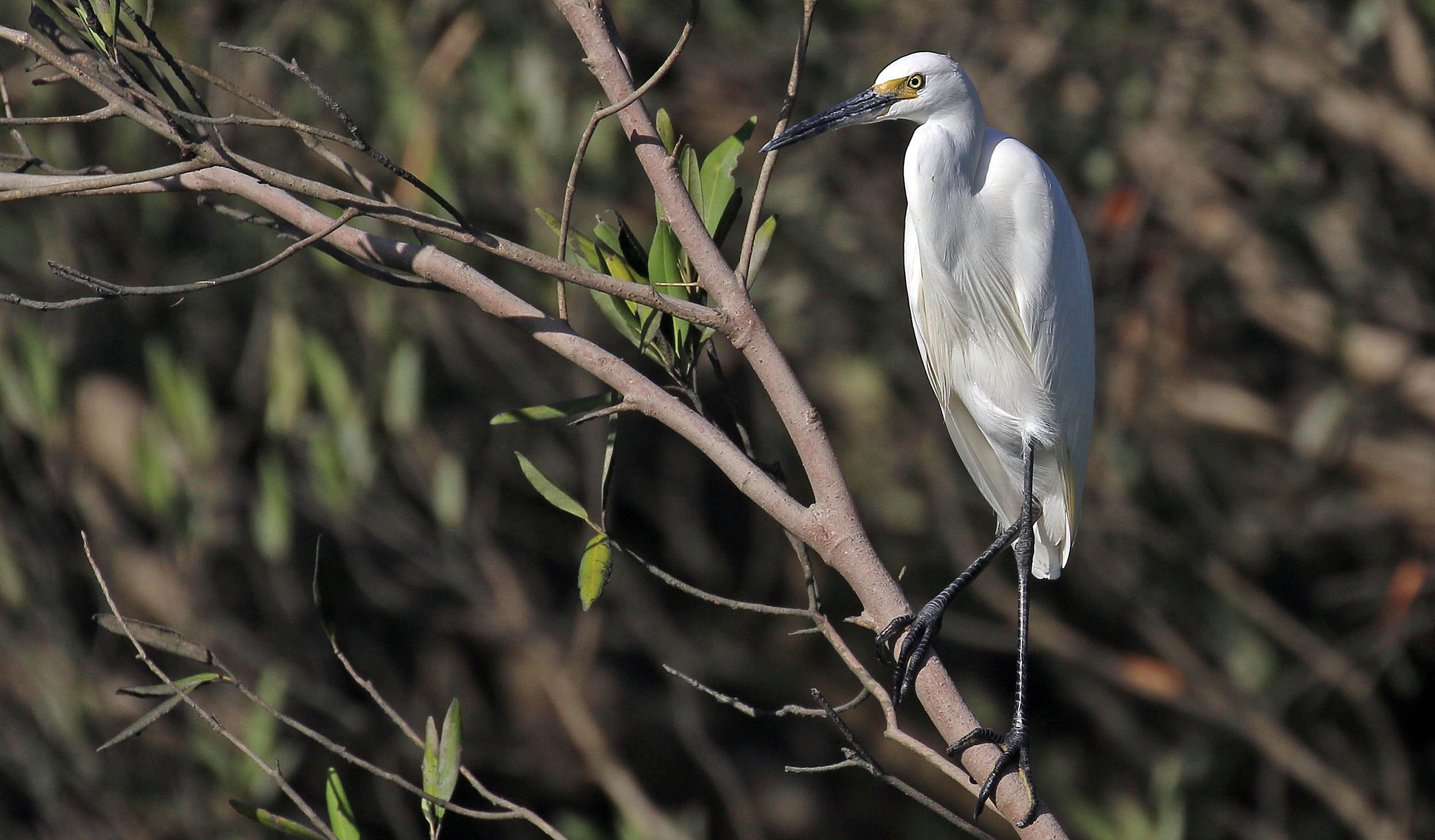 'Little Egret' (Hunter River, Western Australia).
'Little Egret' (Hunter River, Western Australia).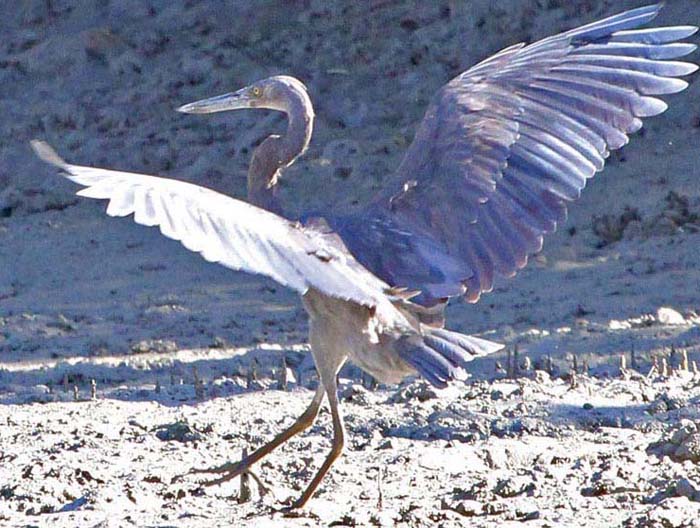 Great-billed Heron
Great-billed HeronThe colourful jewels of the green and brown mangroves are the Kingfishers of the family Alcedinidae.
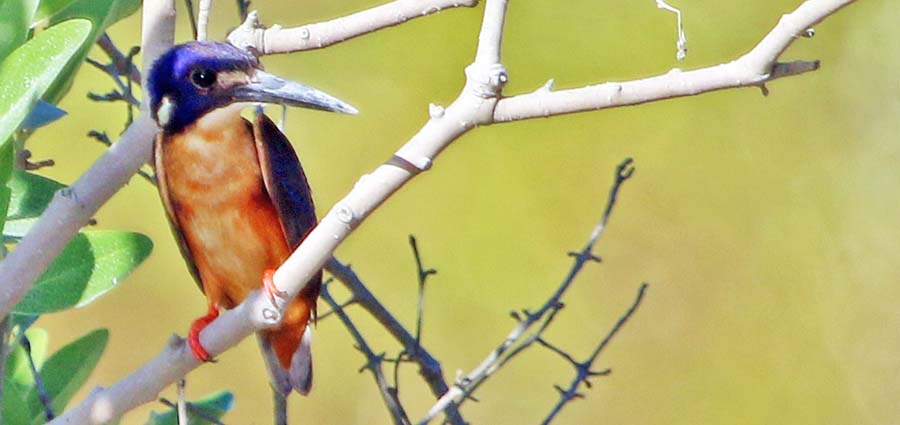 'Azure Kingfisher' (Talbot Bay).
'Azure Kingfisher' (Talbot Bay).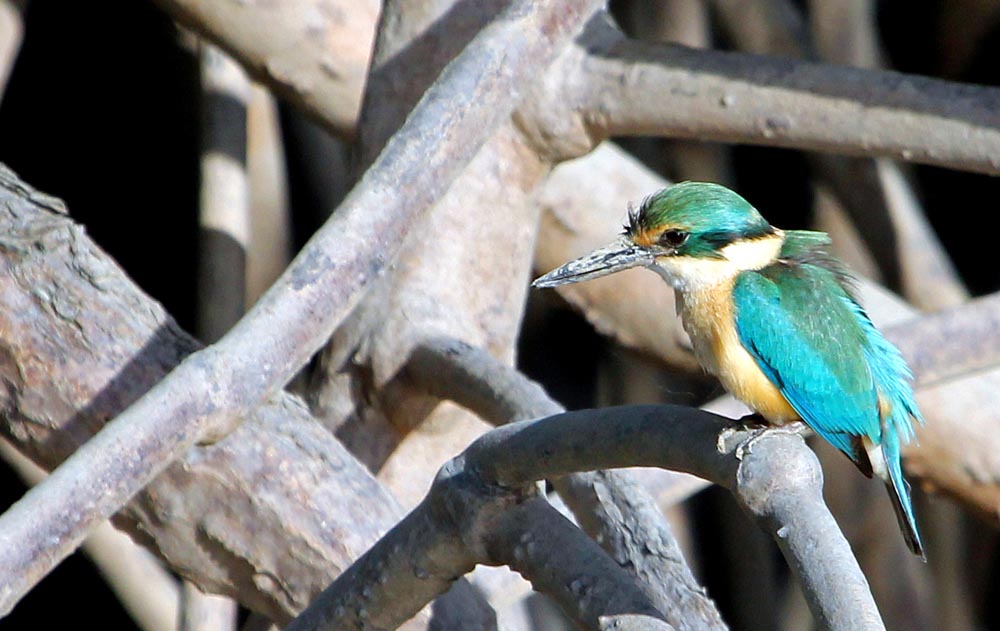 'Sacred Kingfisher' (Prince Frederick).
'Sacred Kingfisher' (Prince Frederick).There are not too many mammals in the mangroves. The most obvious ones are the Flying Fox, that often camp here to sleep during the day. Several types of cetaceans visit the edge of the mangroves, but one of the resident mammals at high tide are the 'Dugong'. These quiet mammals are a flesh coloured rather formless lump.
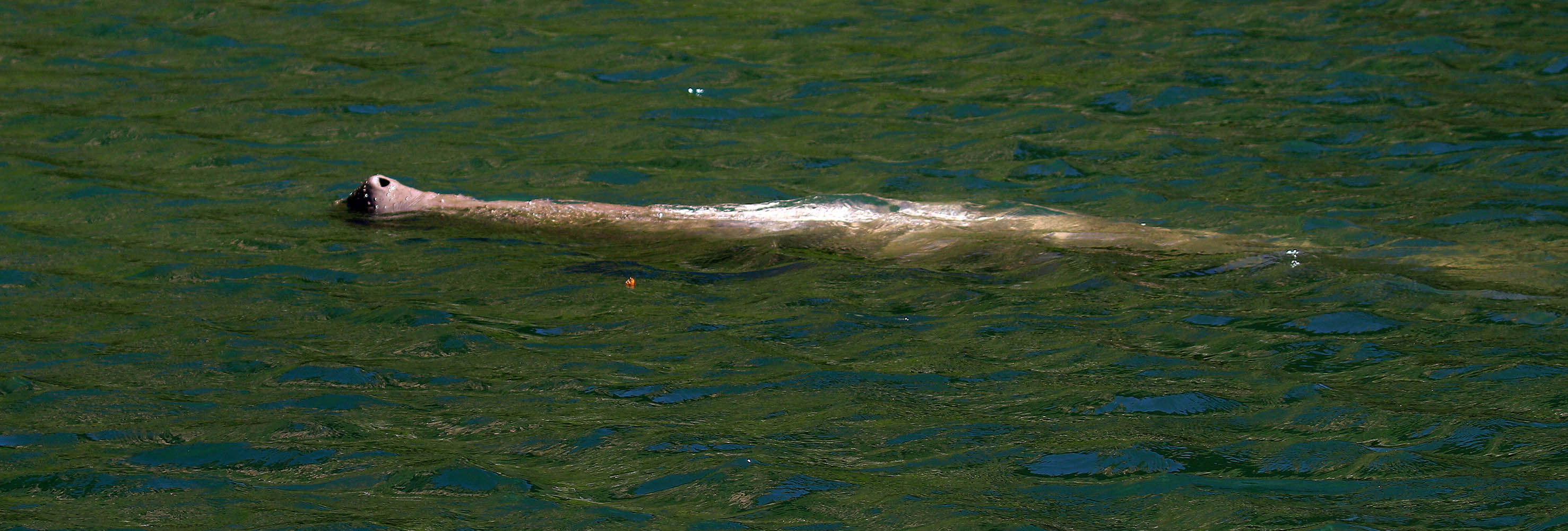 (Dugong)
(Dugong)Places to experience the Australasian mangroves
Australia has the fourth largest amount of mangroves in the world (after Indonesia, Brazil and Nigeria), so there are plenty of places to explore this habitat. Many of this places are quite accessible, being alongside towns, such as Broome and Cairns. Along the east coast there are areas such as Etty Bay. One of the most pristine areas of mangroves in Australia is along the north-west coast in the Kimberley, including the large Prince Frederick Harbour.



